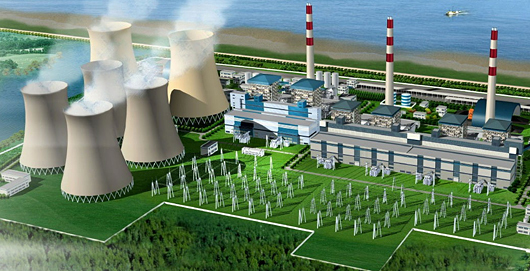Valves are an incredibly versatile tool that can be found pretty much everywhere. It’s under the streets, in our homes, power plants and paper mills, refineries and a wide variety of infrastructure and industrial facilities.
7 industries that use valves
The valve industry is truly diverse in the industries it services. And while they all use some basic types of valves; the materials and construction are often quite different.
Here are seven industries and how they use valves:
-
Power industry
Many power plants generate electric power in steam plants that use fossil-fuel and high-speed turbines. Gate valves are the top choice for power plant on/off applications. Although other valves like the Y-pattern globe valves are sometimes used.
Another type of valve gaining popularity in this industry, and in fact are making great inroads in a formerly linear-valve-dominated industry, are high-performance critical-service ball valves.
The very nature of power plants out a huge strain on piping and valves. Which requires a robust design to handle the extreme combination of cycling, temperature and pressure.
As well as the main steam valving, there are many ancillary pipelines in power plants. These ancillary pipes are populated by myriad of globe, butterfly, check, ball and gate valves.
-
Water works
Water distribution requires relatively low-pressure levels and ambient temperatures. For this reason, different valve design elements that wouldn’t be found somewhere like a power plant, can be used for water works.
As the water temperature is ambient, it allows for the use of rubber seals and elastomers that aren’t suitable anywhere else. These types of materials allow water valves to be equipped tightly in order to seal off drips.
Waterworks valves usually see pressure well below 200psi, so your high-pressure, thicker-walled pressure designs aren’t necessary. Unless you need the valve for a high-pressure point in a tall dam or a long aqueduct—then you may need a water valve built to handle pressures around 300psi.
-
Offshore industry
Offshore production facilities and oil rigs have piping systems which contain a plethora of valves. These are built to a variety of specifications in order to handle all the flow control challenges.
The arterial heart of an oil production facility is the gas or oil recovery piping system. This system isn’t always on the platform itself; the production system often operates at depths of 10,000 feet or more.
On larger oil platforms, more processes are applied to the raw fluid coming from the wellhead. Some of these processes include separating gas (and natural gas) from the fluid steam, and separating water from hydrocarbons.
These systems often include ball and check, and API 6D gate valves. The strict requirements to use API 6D valves for pipelines don’t apply because the pipelines on the drill ship or platform are internal to the facility.
-
Wastewater
Wastewater lines collect all the waste solids and fluids and direct them to the sewage treatment plant. Treatment plants feature low pressure piping and valves to carry out their work, and in many cases, the requirements for wastewater valves are much more lenient than the clean water requirements.
Check valves and iron gate are the most popular choice for this type of service, and the valves are built in accordance with AWWA specifications.
-
Oil and gas production
Gas and oil wells and their production facilities use many heavy-duty valves. Oil gushing hundreds of feet in the air are no longer like to occur, it does illustrate well the pressure of underground gas and oil.
This is why Christmas trees or well heads are placed at the top of a well’s long string of pipe. The combination of valves and special fittings are able to handle pressure upwards of 10,000 psi. it’s rare this kind of pressure is found on land anymore, but they are quite often found on deep offshore wells.
The valves used for wellhead equipment are designed for modest temperatures and extremely-high pressures. Christmas trees typically contain special globe valves called chokes as well as gate valves. The special globe valves are used to regulate the flow from the well.
Aside from the wellheads, there are facilities on a gas and oil field which require valves. These include process equipment to pre-treat gas or oil. And these valves are usually carbon steel rated for lower classes.
-
Pipelines
While underground, pipelines are usually made conspicuous by signs, to prevent people digging or, if the pipe’s underwater from dropping an anchor in the wrong place.
Many important valves are used in these pipes: for example, emergency pipeline shutoff valves are found at specific intervals in accordance with codes and law. An emergency valve can isolate a section of pipeline for maintenance or for a leak.
There are also facilities scattered along the pipeline: this is where the line emerges from the ground so it can be accessed. This is where the launch equipment for inspection and cleaning the line. These stations contain several valves, and they are usually either ball or gate type valves. The valves of a pipeline system must be full-opening to allow for the passage of the launching equipment.
-
Commercial buildings
If you have ever paid attention to a commercial building being erected, you may notice the multitude of fluid arteries that go into its buildings. After all, every building needs water and electricity. And for water there must be variety of piping systems to carry wastewater, grey water, hot water, as well as fire protection.
For fire water systems to be useful, they must have sufficient pressure as well as be conveniently located throughout the building. The type and class of valve for fire main service must be approved by the appropriate governing body before being installed.
Whichever class and type of valve used for fire service can be used for portable water distribution. However, the approval process is not as strict.
The versatility of valves
Truly, valves are everywhere. These are just seven examples, and they are brief examples. Commercial buildings have many more valves than those used for fire service and water—such as those used for steam and heating.
Your car has valves in it and your house or apartment has valves in it. This article is just a brief example of how ubiquitous valves are in our everyday lives.
How ATI Actuators can help you
We offer custom valve automation systems that can be found in the industries mentioned in this article, as well as many more. Based in America, we have helped companies and organizations all over the world by developing infrastructure with proven customized valve actuators.
For more information, please feel free to contact us today.
FAQ:
1. What is an industrial valve?
Industrial valves can be defined as the devices which enable the regulation of the flow of liquids, gases, as well as slurries. This regulation of the flow can be achieved via opening, closing, and partially obstructing the connected pipe or passageway.
2. What are the different functions that valves perform?
Some of the most prominent functions of valves include –
- Flow start or stop
- Regulation of flow and pressure
- Regulation of the direction of flow
- Adjustment of the flow rate
- Safety enhancement via pressure relief or vacuum relief
3. What are the various types of valves?
Some of the most widely used valve types are –
- Isolation Valves
- Regulation Valves
- Safety Relief Valves
- Non-Return Valves
- Special Purpose Valves
Special purpose valves generally include multi-port valves, float valves, foot valves, knife gate valves, and line blind valves amongst others.
4. Which type of valves is used in case a signal is required from two or more different sources?
Shuttle Valves, also known as OR Valves, enable a signal to pass from either of the input points, or both of them. In fact, they also permit the reverse flow of the system exhaust through the same inputs, making them ideal when the signal is required from two or more sources at once.

